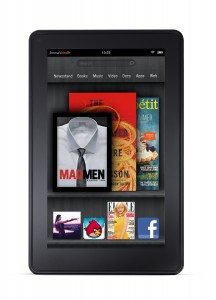Consumers taking to tablets, but get ready for ultrabooks


Tablet computers now account for almost one-quarter of all mobile personal computer shipments and sales. What's more, another mobile computer form factor -- ultrabooks -- is beginning to emerge as another contender for mobile computing mindshare.
Both of these trends point to the need for your company to consider its own mobile technology mix, with which it is enabling employees to do their job. Does it match the realities of consumer usage trends. In addition, your Web site, e-commerce engines and Web-enabled customer service tools increasingly will need to accommodate these form factors. Those that don't could become a source of waning customer satisfaction.
Here are the numbers.
NPD DisplaySearch reported this week that there were almost 73 million tablet computers shipped during 2011, which translates into 25.2 percent of all the mobile personal computers shipped during the past 12 months. That equates to a year-over-year growth rate of approximately 256 percent for the form factor.
During 2012, tablets will pretty much hold their own as a portion of the overall mobile computer market, claiming about 25 percent share, NPD predicts.
Mind you, growth in shipments for notebook computers is still pretty good, relatively speaking. The research firm reports that shipments for 2011 were about 187.5 million units, which was up 12 percent over 2010. Still, that was slightly less than originally projected. What's more, the smallest products within the notebook category grew faster than the rest of the category as a whole, NPD reported.
Part of the shipment hiccup for notebooks was due to hard drive supply chain problems related to floods in Thailand. But there is another development on the horizon that will challenge the traditional notebook form factor. That is the emergence of the so-called ultrabook.
Systems of this nature subscribe to a pretty specific description. They are less than 0.8 inches thick, come with solid state drives and are characterized by instant-on and always-on features. That is, they turn on almost immediately and they stay connected wirelessly, without sucking up oodles of battery life. The best known example of this product type is the MacBook Air, although ideally other early proponent include two companies that pioneered the netbook category, Acer and Asustek.
One big factor that is driving interest in ultrabooks is Intel's backing of the category. That let research firm IHS iSuppli to forecast in November that the ultrabook category would claim about 43 percent of the total global notebook PC market share by 2015, up from 2 percent in 2011.
NPD DisplaySearch also believes that ultrabooks will breath new life into the notebook category, starting in about two years. The big crossover point on its forecasts appears to be in 2017, when NPD DisplaySearch anticipates that shipments will be close to 180 million units, which will be about one-third of the notebook form factor during that timeframe.
"In the longer term, notebook PC shipments will bounce back as [average selling prices] continue to decline, Windows 8 launches and new form factors, such as ultrabooks, continue to emerge," said Richard Shim, an NPD DisplaySearch senior analyst.
As consumer technology trends continue to worm their way into corporate IT departments, the growing popularity of tablets and ultrabooks will mean more new form factors to support. More and more often, those computers may not even be on your company's list of corporate assets, as more businesses support the "bring your own device" movement. So, strictly speaking, in order to keep pace with your competition it may be wise to begin supporting both of these mobile form factors sooner rather than later.
These technologies will also matter when it comes to the face that your business presents to the outside world.
Increasingly, more people will visit your Web site using the smaller display sizes -- displays that can reformat their perspective if they are turned on their side. That means you'll need to support Web development resources that can optimize the mobile surfing or shopping experience.
Mobile computers are also working their way into emerging economics. Consider that NPD DisplaySearch that mobile computer shipments into emerging regions were 138 million units in 2011, compared with 147.5 million into mature regions. By 2017, that will cross over: NPD DisplaySearch predicts mobile shipments of 452.8 million into emerging regions; shipments into mature regions are forecast at 371.6 million.
Related stories:
This post was originally published on Smartplanet.com